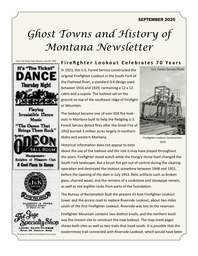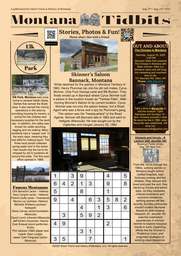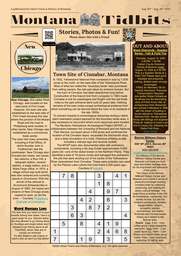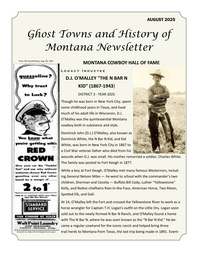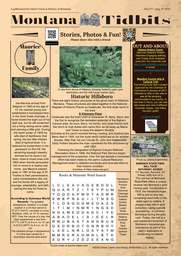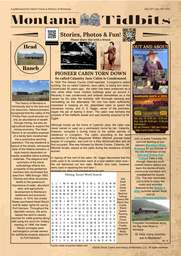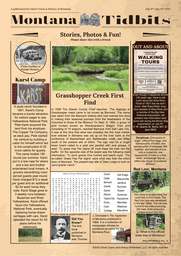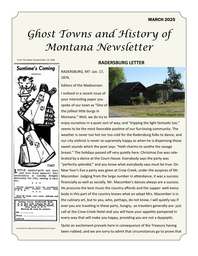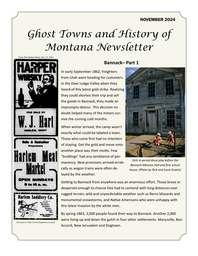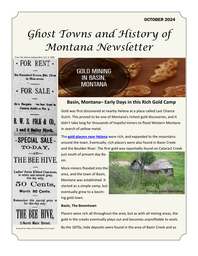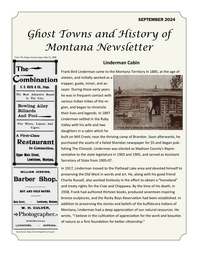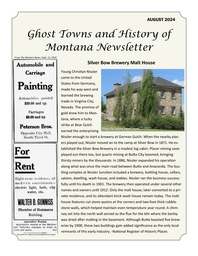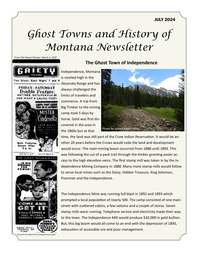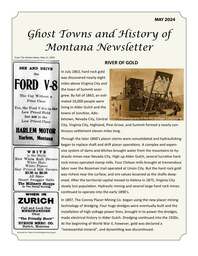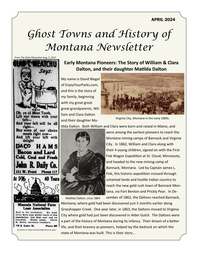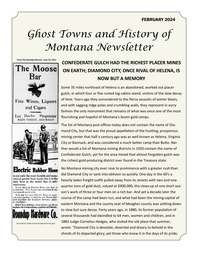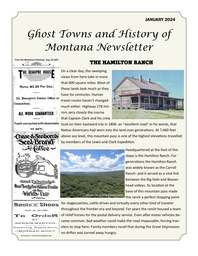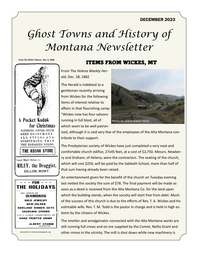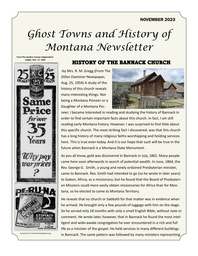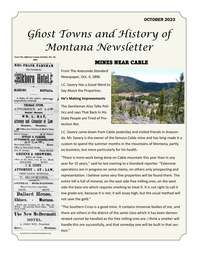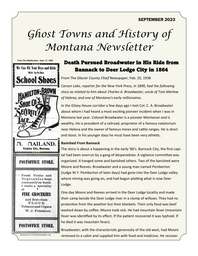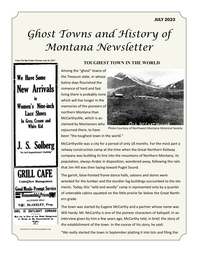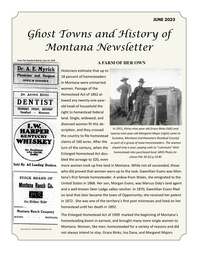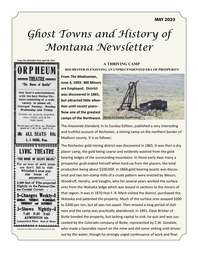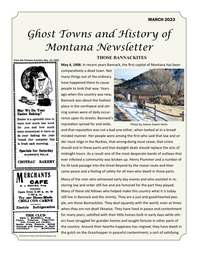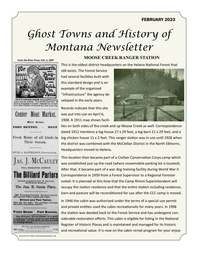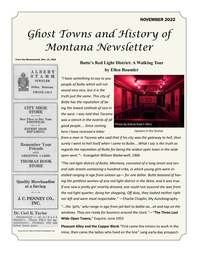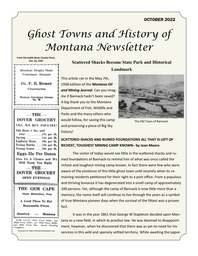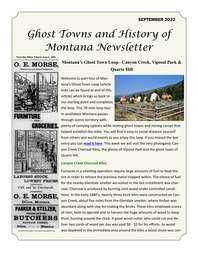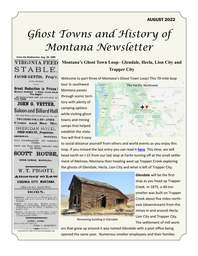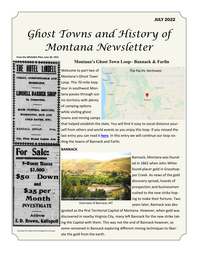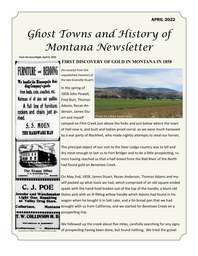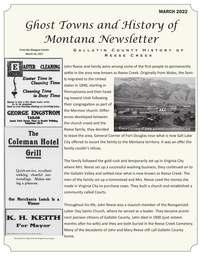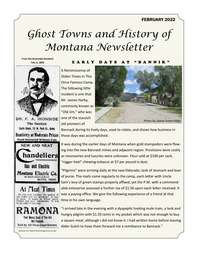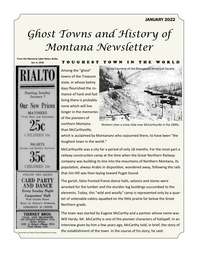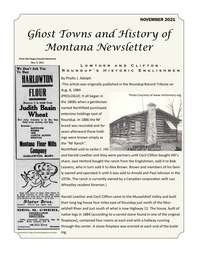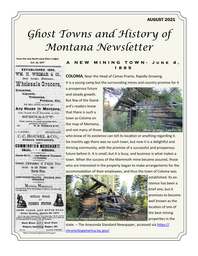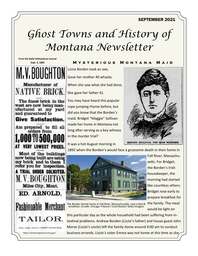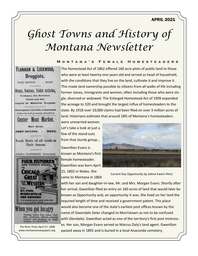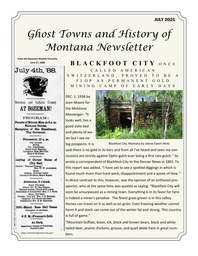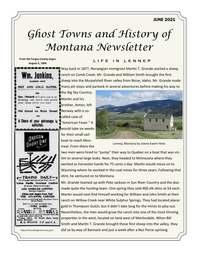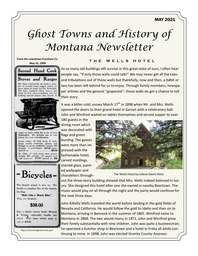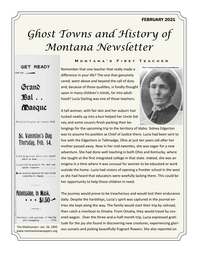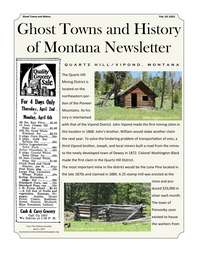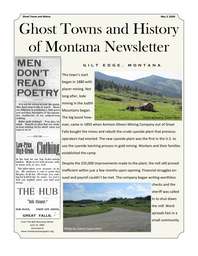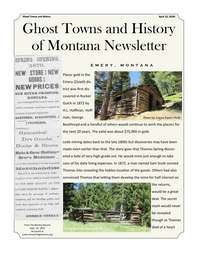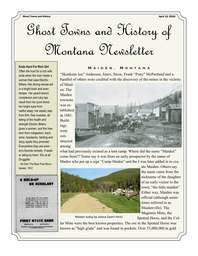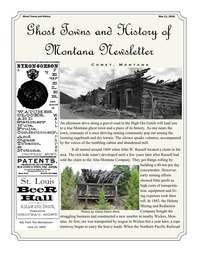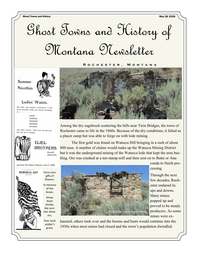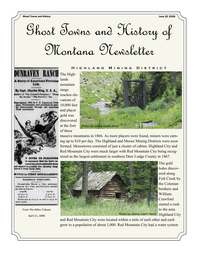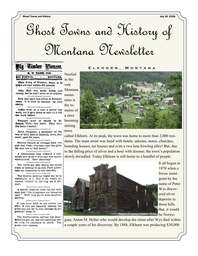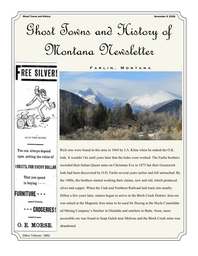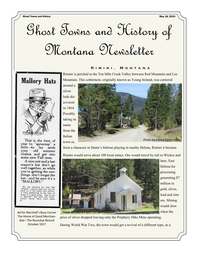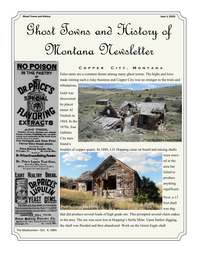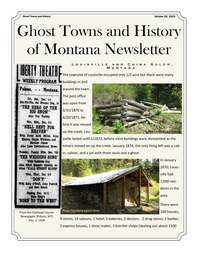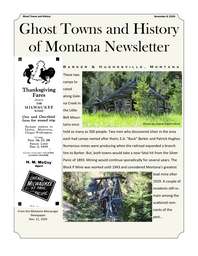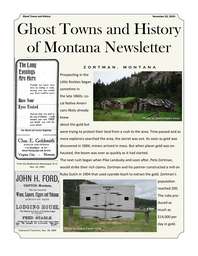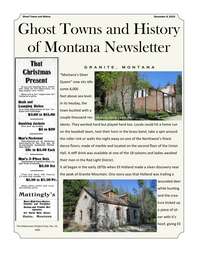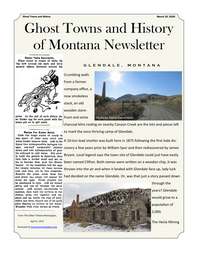P a g e 6
G h o s t T o w n s a n d H i s t o r y o f
M o n t a n a N e w s l e t t e r
the company as only western people can enjoy social parties. With all the freedom of western life I have
never seen a man intoxicated at a ball or other social meeting; and the sincere cordiality evinced by the
ladies toward each other would be an improvement on the more cultivated customs of the east.
Between Christmas and New Year the city was unusually lively. The streets were gay with beauty and
fashion, and in the evening merry music and the dance were always to be found under some of the many
hospital roofs of the town. Col. John X. Beidler (then collector of customs at Helena) was here, having a
good time visiting old friends; and Col. Nell Howie (head of the Montana volunteer Indian fighters at that
time) was also among the guests enjoying the festivities of the capitol. We spent many pleasant hours,
during leisure afternoons, hearing Colonels Sanders, Beidler, Howie, Hall and others fight over again the
desperate battles they had had to give in order to make safe the victory over organized crime.
Finally New Year’s morning dawned upon the little mountain capitol, and it was by general consent laid
out as a field day of frolic. A party comprising the heads of church and state—Bishop (Tuttle), chief executive
(Governor Green Clay Smith), Chief Justice (Hosmer), secretary, (Marshal), Professor (Eaton, geological
expert), and some others of us who classed as high privates—started out to inaugurate New Year calls.
We naturally enough first paid our respects to the family of one of the distinguished officials, and found
that our call was not expected. A huge bowl of foaming egg-nogg was set out on the center-table; and we
were made welcome, and accepted accordingly. We spent all of sin hour with the fair hostess, when the
professor decided, from the confusion of tongues, that an analysis of the beverage was a necessity; and,
after a careful and scientific investigation, he reported that the egg-nogg consisted of three gallons of
whisky, one egg and a little cream. I can vouch for the bishop retiring in as good order as he came; but of
the others, including the writer, it is necessary to speak. There was some inexplicable confusion in fitting
our hats as we started, but it may be explained by the very thin air of the mountains flying to our heads.
We did not get over half the city until the walking became very hard for our party, owing to the condition
of the streets and other causes; and it was found impossible to conclude our calls on foot. A few inches of
snow had fallen the day before, and Colonel Beidler, always ready for an emergency, called out a fourhorse
team and sled, in which we completed the New Years calls.
It was not so difficult to get from house to house, but it was very tedious and tiresome getting in and out
of the sleigh so often—so much so, indeed, that several of the party turned up missing on final roll-call.
We had many a song and many a speech and the jingling glasses told of the gushing hospitality that welcomed
the party at every house. The chief justice gave a story and a song and was gravely lectured because
there was no baby in the house. Neither host, nor hostess, nor distinguished guest, received the
lavish compliments of the season that were given to the future statesmen and mothers of the mountains,
now boasting of swaddling clothes. One not yet a week old received the homage of the distinguished party,
as the nurse guarded the cradle with mingled devotion and pride. Several were christened in the
round—not by the bishop in an official way, but in most instances with biblical names.
At last the team was brought up before the hall used by the house of representatives. Colonel Beidler was
sitting with the driver, and, with a merry twinkle of the eye, he said "Fun ahead, boys; let's have a hand in
it;” and he called our attention to a rude placard on the door, stating that a sparring match would come
P a g e 7
G h o s t T o w n s a n d H i s t o r y o f
M o n t a n a N e w s l e t t e r
off at about that time. “All hands come in,” said the colonel; and
he looked especially for the bishop. "Just a little fun in the manly
art,” he added; but the bishop pleaded an engagement, and,
with a kind farewell, he left us.
The legislature had adjourned and the hall of the house had been
converted into a regular ring; the floor was covered with several
inches of sawdust, a circle of rude board seats had been thrown
around the ring, and what I supposed to be a sparring-match was
to be exhibited at the moderate price of one dollar a head. "It’s
to be a square fight, and there will be fun,” said Beidler; but still I
did not comprehend the entertainment to which we were Invited.
After the Orem and Dwyer fight, the legislature had passed a law forbidding public exhibitions of the
manly art, unless the contestants wore gloves—intending, of course, that the heavily-padded boxing
gloves should be used.
Upon entering the hall there was every indication of serious business on hand. A ring some fifteen feet in
diameter was formed and in it were four men. In one corner was Con Orem, stripped to his undershirt,
with an assortment of bottles, sponges, etc.; and by his side was sitting a little, smooth-faced fellow,
Photo: Richard O. Hickman General Merchandise
building and the Pony Saloon, Virginia City, Montana,
1885. Photographer unidentified, courtesy of MHS
Legacy Photograph Collection, www.mtmemory.org
wrapped in a blanket, looking like anything else than a hero of the prize-ring. He answered to the name of
“Teddy,” although Englishborn, and weighed one hundred and twenty-four pounds. In the opposite corner
was a sluggish-looking Hibernian, probably ten pounds heavier than Teddy, but evidently lacking the
action of his opponent. With him was also his second. He was placarded as "The Michigan Chick.” and
they had met to have a square battle, according to the rules of the ring, for one hundred dollars a side.
Both had thin, close-fitting gloves on and they were to fight in that way to bring themselves within the
letter of the law. Packed in the hall were over one hundred of the roughs of the mines, and I confess that I
did not feel comfortable as I surveyed the desperate countenances and the glistening revolvers with
which I was surrounded. Regarding discretion as the better part of valor, I suggested to Colonel Beidler
that we had better retire, but he would not entertain the proposition at all. “Stay close by me, and there’s
no danger,” was his reply. I had seen almost every phase of mountain-life but a fight, and I concluded that
I would see it out and take the chances of getting away alive. My old friend, Con Orem, who was to second
Teddy, gave me a comfortable seat close by his corner, and reminded me that I was about to witness
a most artistic exhibition of the manly art.
A distinguished military gentleman was chosen umpire, and in a few minutes he called “time.” Instantly
Teddy and Chick flung off their blankets and stood up in fighting trim—naked to the waist and clad only in
woolen drawers and light shoes. Teddy stripped as delicately as a woman. His skin was soft and fair, and
his waist was exceedingly slender, but he had a full chest, and when he threw out his arms on guard he
displayed a degree of muscle that indicated no easy victory for his opponent. "Chick” was leaner, but had
superfluous flesh, and was evidently quite young, as manifest when he put himself in position for action.
He betrayed evident timidity, and was heavy in his movements, but he seemed to have the physical pow


